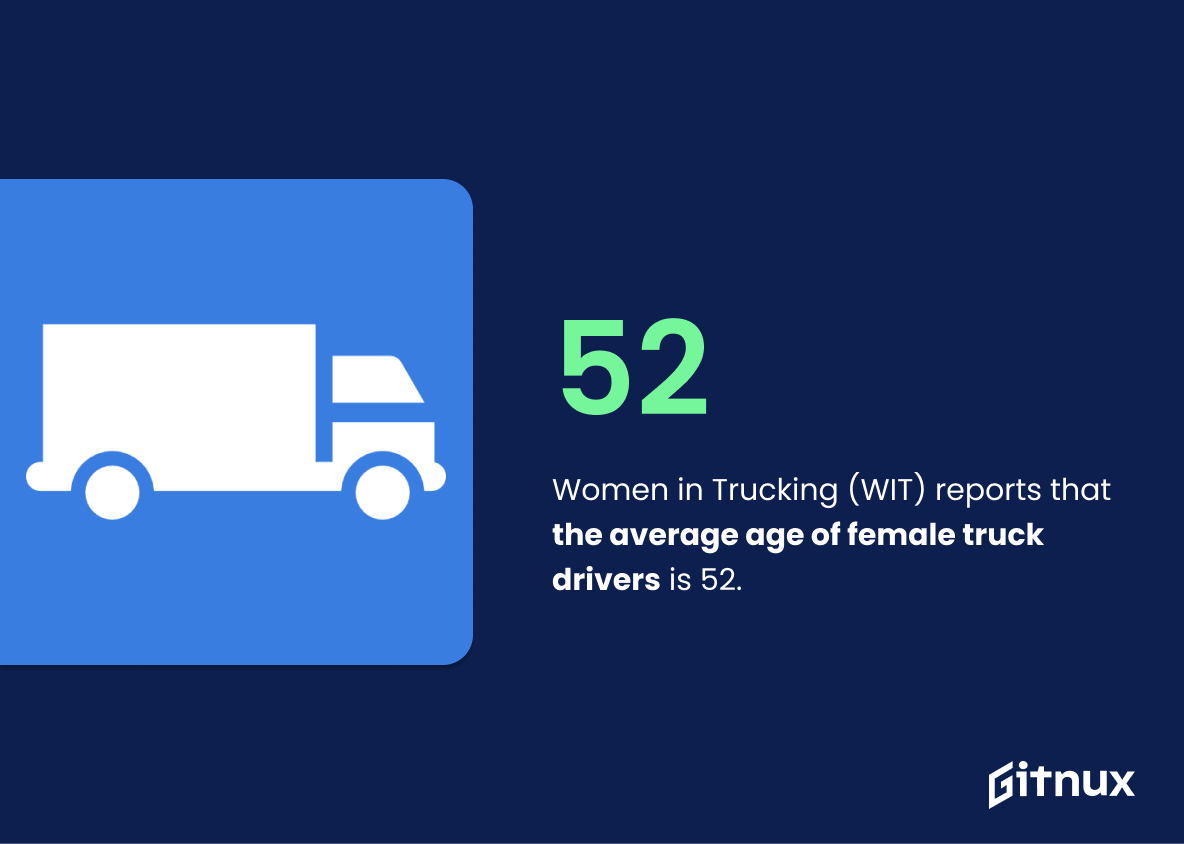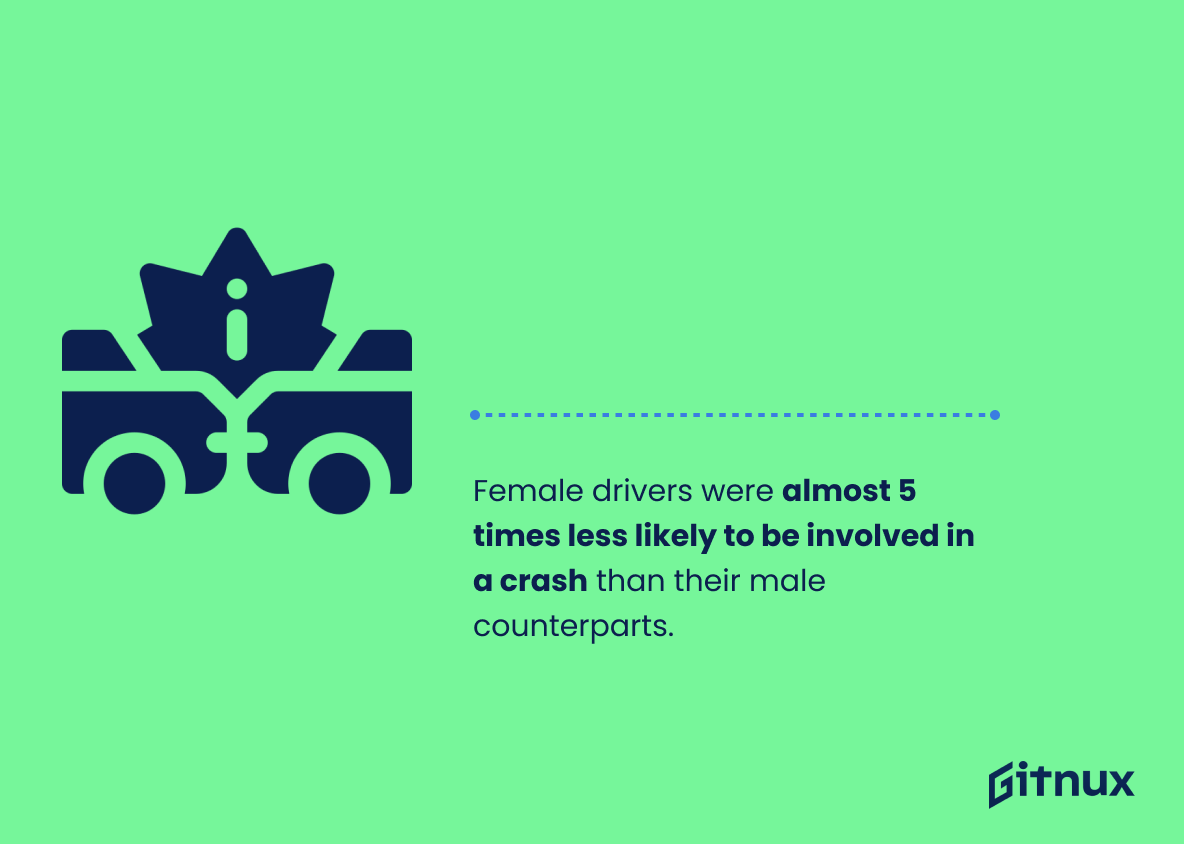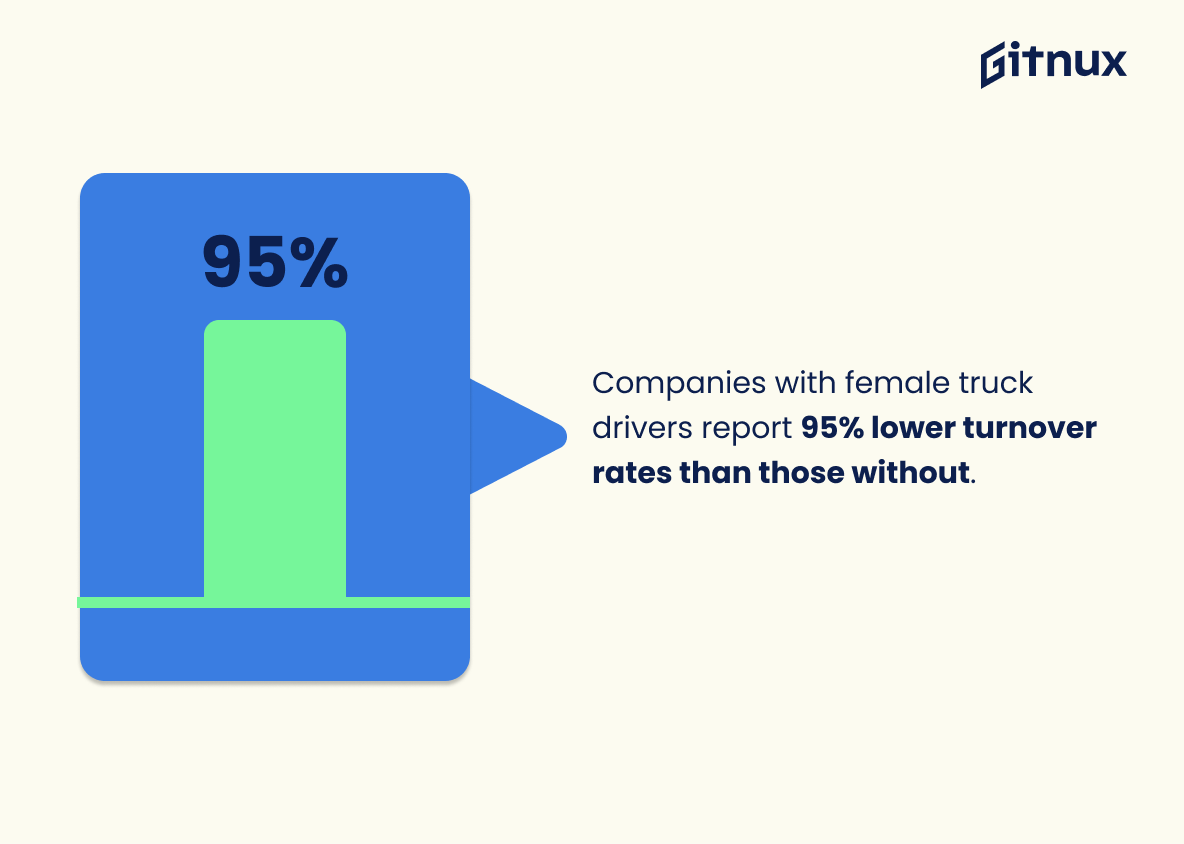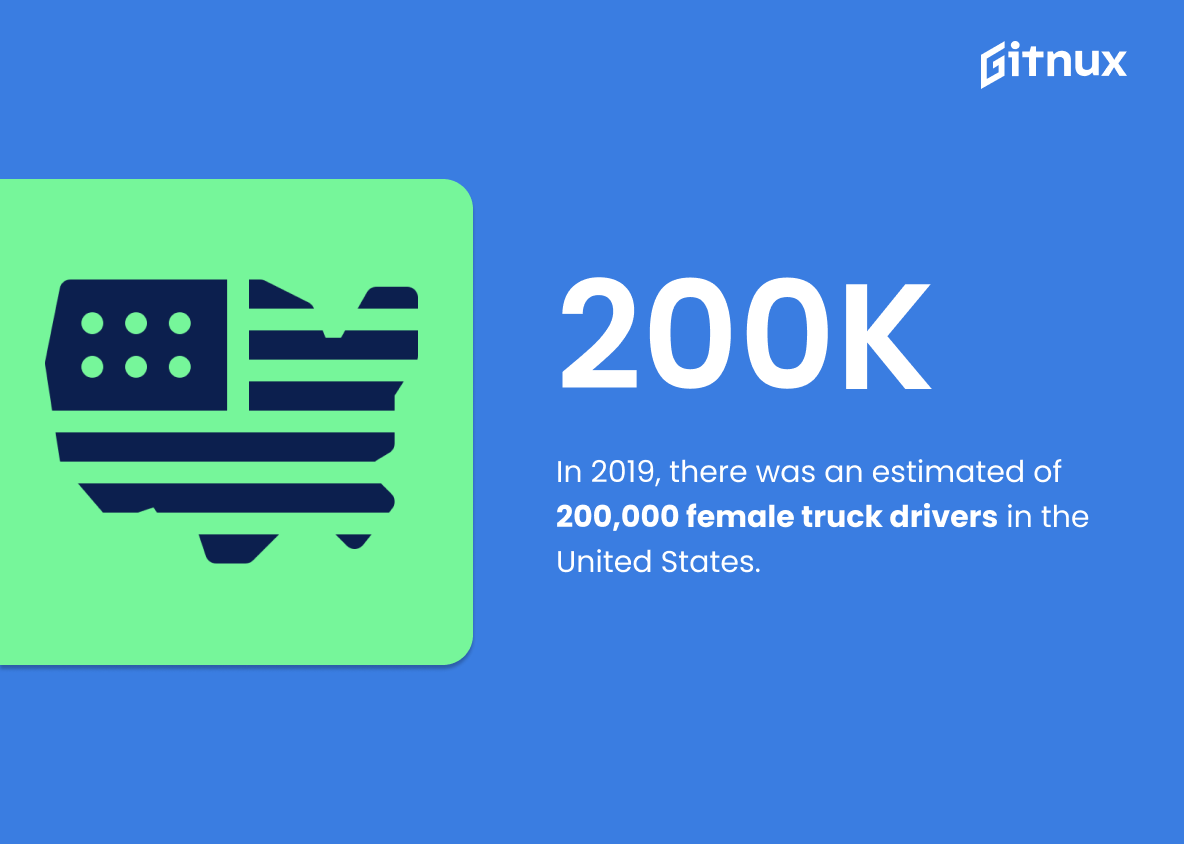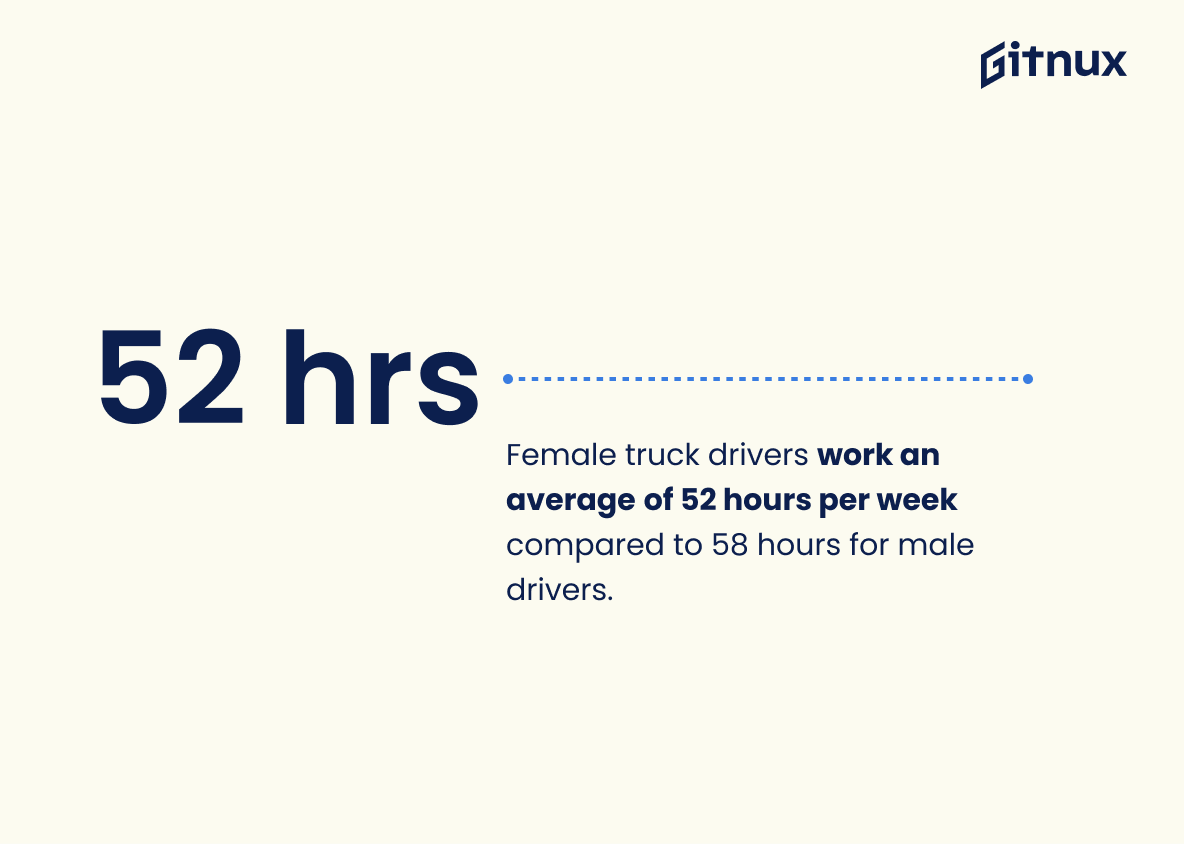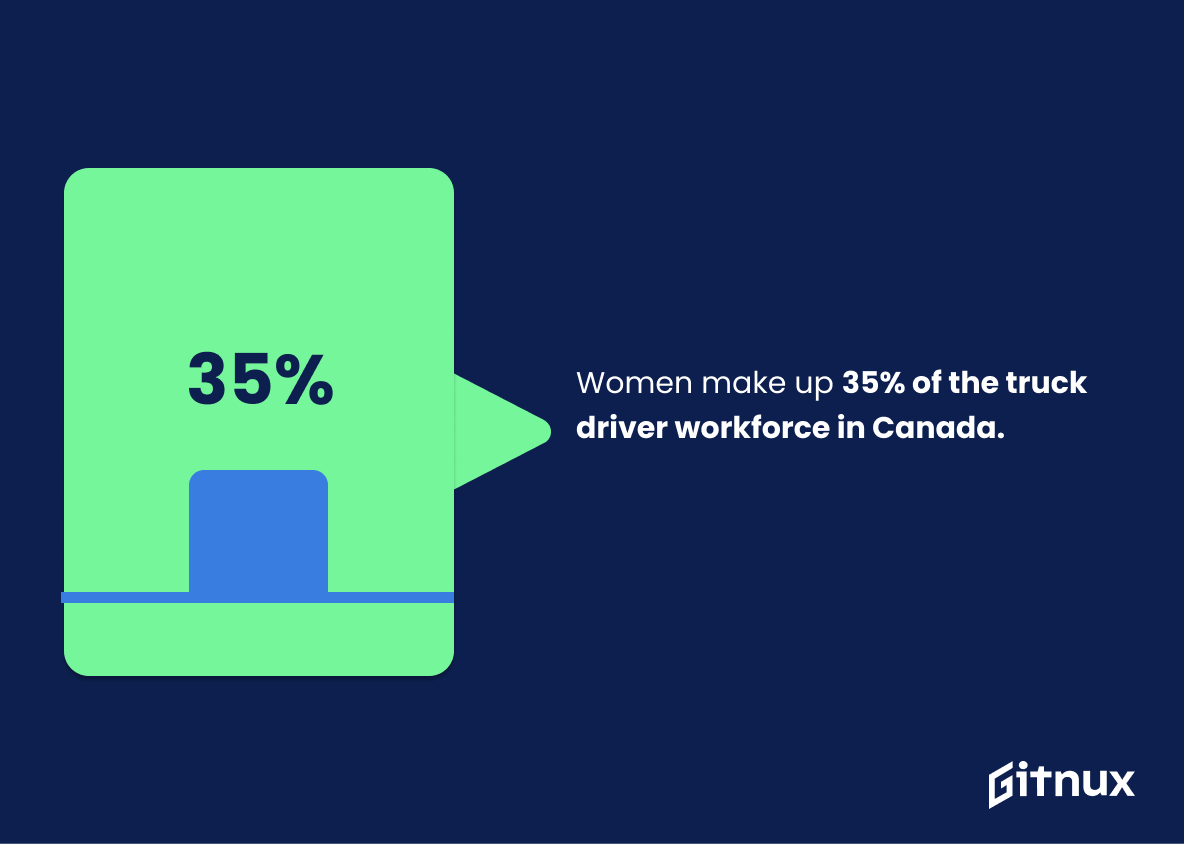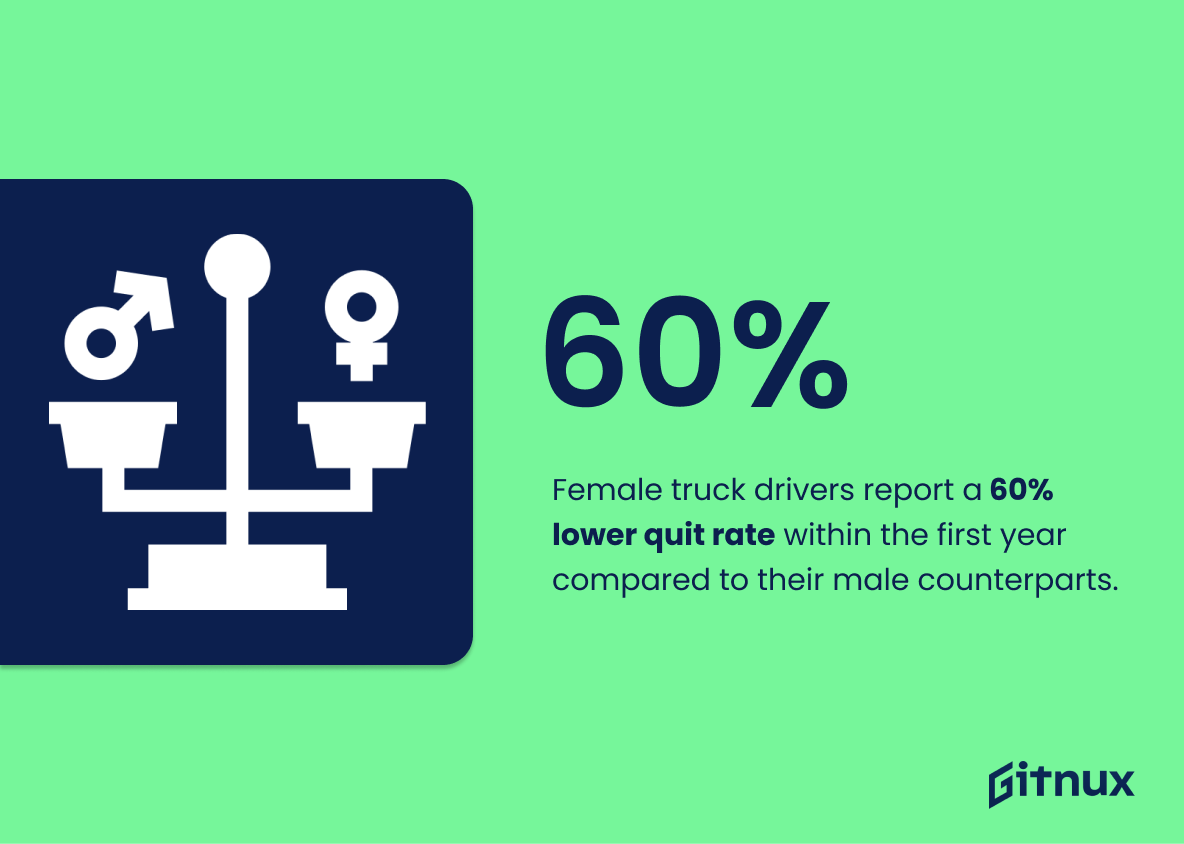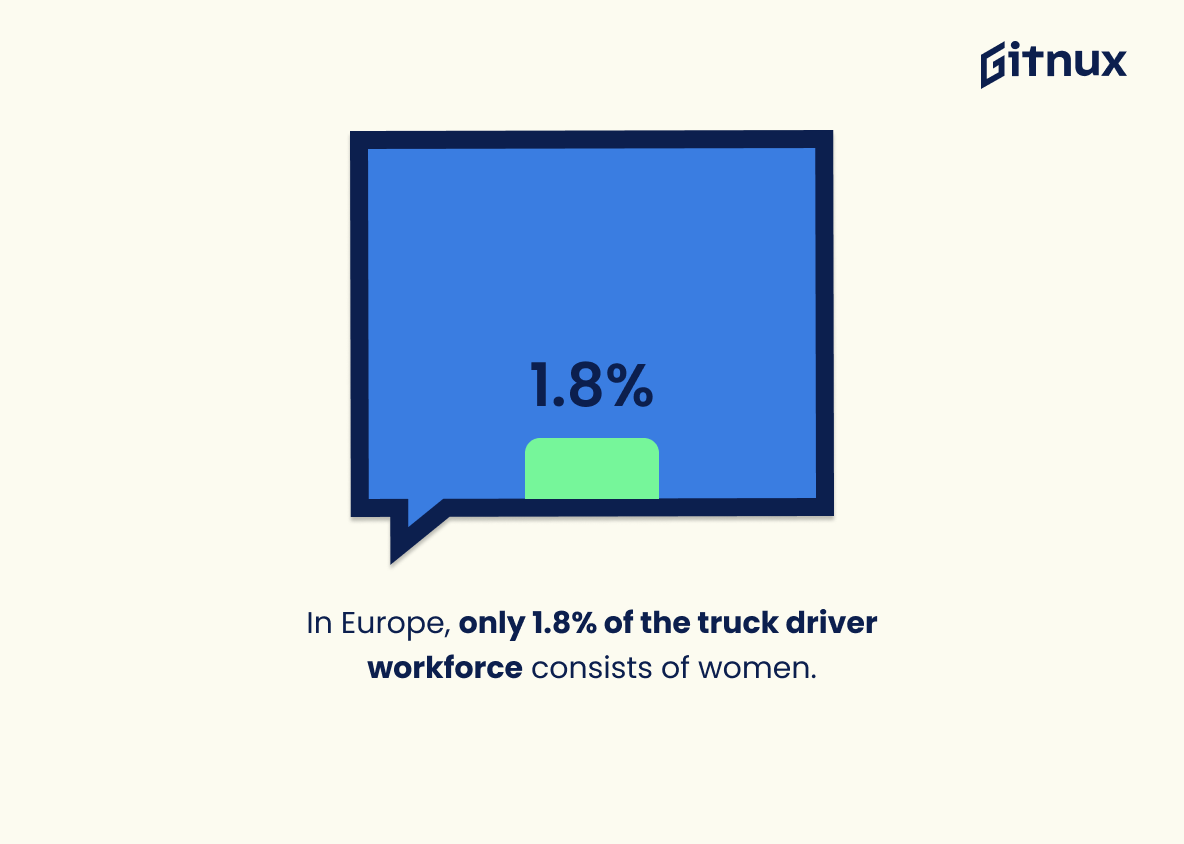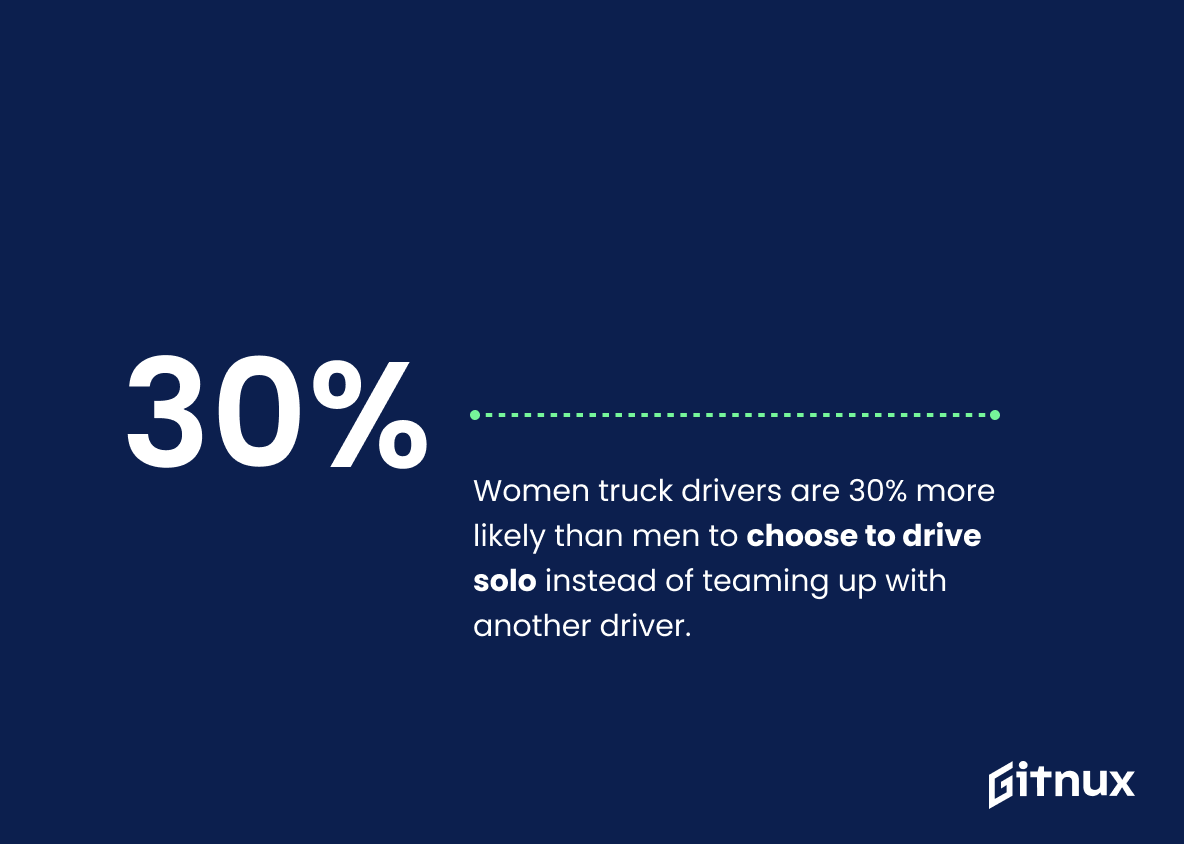The trucking industry is an essential part of the global economy, and female truck drivers are a growing presence in this field. Despite making up only 10% of the overall workforce in 2020, women have made significant strides over the past decade with employment increasing by 68%. However, there is still much progress to be made as they make up just 6% of all US truck drivers and less than 1% in the UK.
In 2019, 24.3% of total employees were women but held only 12.5% of driver positions while earning 9 percent less for doing similar work compared to their male counterparts. The average age for female drivers was 52 according to Women In Trucking (WIT) reports and companies that employ them report 95 percent lower turnover rates than those without any female staff members on board.
Furthermore, research shows that females are almost 5 times less likely to be involved in a crash than males and 27 percent more likely not slide tandems at weigh stations which saves time and reduces violations significantly; however they face challenges such as sexual harassment on job sites or difficulty finding protective gear designed specifically for them – 66 % reported facing these issues during 2021 surveys . Additionally 40 % students enrolled into CDL training schools were women back in 2020 whereas 35 % Canadian workforce consists out of ladies who drive trucks professionally today . Lastly , 21 hours per week seems like an average working schedule among lady-drivers versus 58 hours spent behind wheel by men every 7 days .
Overall it’s clear that although great strides have been taken towards gender equality within this sector there remains room for improvement when it comes to wages , safety measures & accessibilities provided along with other benefits offered exclusively due lack thereof awareness about same amongst employers & authorities alike .
This statistic is a stark reminder of the gender disparity in the truck driving industry. It highlights the fact that women are significantly underrepresented in this field, and that there is a need for greater gender diversity in the truck driving industry. This statistic is an important piece of information to consider when discussing the challenges and opportunities for female truck drivers.
Female truck drivers in the UK make up less than 1% of the total truck driver workforce.
This statistic is a stark reminder of the gender disparity in the truck driver workforce in the UK. It highlights the fact that female truck drivers are vastly underrepresented in the industry, and that more needs to be done to ensure that women are given the same opportunities as men in this field. This statistic is an important one to consider when discussing the challenges that female truck drivers face, and the need for greater gender equality in the industry.
Female Truck Drivers Statistics Overview
Women in Trucking (WIT) reports that the average age of female truck drivers is 52.
This statistic is a telling indication of the longevity of female truck drivers in the industry. It speaks to the dedication and commitment of these women to their profession, and the fact that they have been able to remain in the industry for so long. It also highlights the importance of providing support and resources to female truck drivers, so that they can continue to thrive in the industry.
Female truck drivers earn about 9% less than their male counterparts for the same work.
This statistic is a stark reminder of the gender pay gap that persists in the truck driving industry. It highlights the need for greater gender equality in the workplace, and serves as a call to action for employers to ensure that female truck drivers are paid the same as their male counterparts for the same work.
Female drivers were almost 5 times less likely to be involved in a crash than their male counterparts.
This statistic is a powerful reminder of the importance of female truck drivers in the industry. It highlights the fact that female drivers are far less likely to be involved in a crash than their male counterparts, which speaks to their skill and experience behind the wheel. This statistic is a testament to the fact that female truck drivers are just as capable as their male counterparts, and should be given the same opportunities and respect in the industry.
Companies with female truck drivers report 95% lower turnover rates than those without.
This statistic is a powerful indicator of the value that female truck drivers bring to the industry. It demonstrates that companies with female truck drivers are able to retain their employees for longer periods of time, resulting in greater stability and cost savings. This is an important point to consider when discussing the benefits of hiring female truck drivers.
In 2020, 40.4% of the students enrolled in truck driving school were women.
This statistic is a powerful indicator of the growing presence of women in the truck driving industry. It shows that more and more women are taking the initiative to pursue a career in truck driving, and that the industry is becoming increasingly diverse. This statistic is a testament to the progress that has been made in the truck driving industry, and it serves as an inspiration to other women who may be considering a career in truck driving.
In 2019, there was an estimated 200,000 female truck drivers in the United States.
This statistic is a powerful reminder of the progress that has been made in the trucking industry in recent years. It shows that more and more women are taking on the challenge of becoming truck drivers, and that the industry is becoming more diverse and inclusive. This statistic is a testament to the hard work and dedication of female truck drivers, and it serves as an inspiration to other women who may be considering a career in trucking.
Female truck drivers are 27% less likely to slide their tandems at a weigh station, saving time and reducing violations.
This statistic is a testament to the efficiency and skill of female truck drivers. By sliding their tandems at a weigh station, female truck drivers are able to save time and reduce violations, demonstrating their ability to navigate the trucking industry with precision and accuracy. This statistic is a powerful reminder of the value female truck drivers bring to the industry.
Female truck drivers work an average of 52 hours per week compared to 58 hours for male drivers.
This statistic is a powerful indicator of the gender gap in the truck driving industry. It shows that female truck drivers are working fewer hours than their male counterparts, suggesting that they are not being given the same opportunities for employment and advancement. This disparity in hours worked could be due to a variety of factors, such as gender bias or lack of access to certain jobs. This statistic is an important reminder that there is still work to be done to ensure that female truck drivers are given the same opportunities as their male counterparts.
Women make up 35% of the truck driver workforce in Canada.
This statistic is a powerful reminder of the progress that has been made in the truck driving industry in Canada. It shows that women are increasingly taking on roles that were traditionally held by men, and that the industry is becoming more diverse and inclusive. This statistic is an important part of the conversation about female truck drivers, and it highlights the importance of recognizing and celebrating the contributions of women in the industry.
Women truck drivers have a 40% lower accident rate than men.
This statistic is a powerful testament to the skill and safety of female truck drivers. It demonstrates that women are not only capable of performing the same job as men, but they are doing it with greater success. This statistic is a great example of how women can be just as successful as men in traditionally male-dominated fields. It is also a reminder that gender should not be a factor when it comes to hiring and promoting employees.
Female truck drivers report a 60% lower quit rate within the first year compared to their male counterparts.
This statistic is a powerful indicator of the success of female truck drivers in the industry. It shows that female truck drivers are more likely to stay in the job for longer than their male counterparts, which is a testament to their dedication and commitment to the profession. This statistic is also important in terms of highlighting the potential for female truck drivers to make a positive impact on the industry, as it suggests that they are more likely to remain in the job for longer and contribute to the industry in a meaningful way.
In Europe, only 1.8% of the truck driver workforce consists of women.
This statistic is a stark reminder of the gender disparity in the truck driver workforce in Europe. It highlights the need for greater representation of women in this field, and serves as a call to action for those who are passionate about promoting gender equality in the workplace. It also serves as a reminder of the importance of creating an environment that is welcoming and supportive of female truck drivers.
Women truck drivers are 30% more likely than men to choose to drive solo instead of teaming up with another driver.
This statistic is a powerful indicator of the independent spirit of female truck drivers. It speaks to their willingness to take on the challenge of driving solo, despite the potential for greater earnings when teaming up with another driver. This statistic is a testament to the strength and determination of female truck drivers, and is an important part of the story of their success in the industry.
Conclusion
The statistics presented in this blog post demonstrate that female truck drivers are a growing presence in the industry, but they still face many challenges. Despite making up 10% of the overall workforce and 24.3% of total employees, women hold only 12.5% of truck driver positions and make up less than 1% of the UK’s total truck driver workforce. Female drivers also earn 9% less than their male counterparts for doing the same work and experience higher rates of sexual harassment on the job compared to men. On top of these issues, 66 percent reported difficulty finding protective gear designed specifically for them in 2021 surveys.
However, there is some good news: The employment rate has increased by 68%, with 40 percent enrolled at CDL training schools being women; female drivers have an average age 52 years old; companies report 95 percent lower turnover rates when employing female drivers; accident rates are 40 percent lower among females compared to males; quit rates within one year were 60 percent lower among females as well; 30percent more likely to choose solo driving over teaming up with another driver ;and finally 21 % fewer violations due to sliding tandems at weigh stations . These facts show that while progress has been made towards gender equality in terms of representation and pay gap reduction ,there is still much room for improvement before true parity can be achieved across all aspects related to working conditions faced by both genders within this field
References
0. – https://www.trucknews.com
1. – https://www.bls.gov
2. – https://www.businesswire.com
3. – https://www.cdltrainingspot.com
4. – https://www.cdc.gov
5. – https://www.womenintrucking.org
6. – https://www.businessinsider.com
7. – https://www.fmcsa.dot.gov
8. – https://www.telegraph.co.uk
9. – https://www.siriusxm.com
10. – https://www.truckerpath.com
11. – https://www.euronews.com
12. – https://www.tandemlogistics.com
